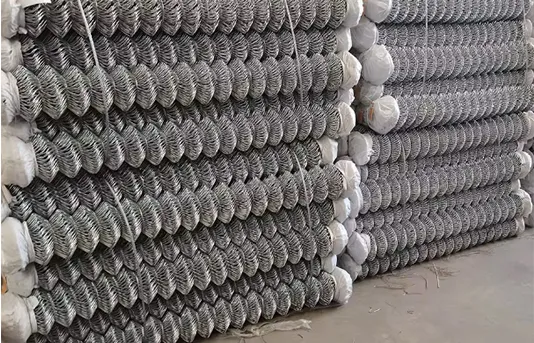-
 Phone:
Phone: -
 Email:
Email:

Explore the Hexagonal Fence
The Hexagonal Fence A Unique Architectural Element
Fences have long been an essential part of landscaping and architecture, serving not only as boundaries but also as pivotal design elements that enhance the aesthetic of a property. Among the various designs, the hexagonal fence stands out due to its unique geometry and visual appeal. This article explores the characteristics, benefits, and potential applications of hexagonal fencing.
A hexagonal fence is defined by its six-sided structure, creating a series of hexagonal panels that can be arranged in various configurations. This geometric shape offers a modern aesthetic that contrasts sharply with traditional rectangular or square fencing. The hexagon, inherently associated with nature due to the natural formation of honeycombs and certain crystals, evokes a sense of harmony and balance. This makes hexagonal fencing not only visually stunning but also symbolically aligned with the environment.
One of the most significant advantages of a hexagonal fence is its ability to provide a comprehensive view
. The open design allows for better sightlines compared to solid fences, making it ideal for gardens and residential areas where interaction with the landscape is desired. This feature encourages a sense of openness while still maintaining a clear boundary, enabling homeowners to enjoy their surroundings without feeling enclosed.hexagonal fence

In addition to its aesthetic and practical benefits, hexagonal fencing is also adaptable. It can be constructed from various materials including wood, metal, and vinyl, allowing homeowners to choose a style that best fits their personal taste and the architectural style of their home. Moreover, hexagonal fences can be used in a myriad of applications, including garden enclosures, property boundaries, or decorative features in parks and public spaces.
The installation of a hexagonal fence can also provide ecological benefits. By incorporating plants or climbing vines into the design, the fence can become part of an ecosystem, supporting local wildlife and creating microhabitats. This element of sustainability resonates with the increasing emphasis on environmentally-friendly construction practices. Furthermore, the unique shape can facilitate enhanced airflow and sunlight penetration to plants within and around the fence, promoting healthier growth.
When considering hexagonal fencing, it is crucial to think about functionality. Depending on the intended use—be it for privacy, security, or purely decorative purposes—the design can be tailored accordingly. For example, a taller, more densely spaced hexagonal fence might be suitable for increased privacy, while a shorter, more open design can function as a decorative garden element.
In conclusion, the hexagonal fence is a remarkable architectural choice that combines aesthetic appeal with practicality and sustainability. Its geometric elegance enhances any landscape, providing both a boundary and an opportunity to integrate with nature. As more homeowners and architects seek innovative solutions for outdoor spaces, the hexagonal fence stands out as a versatile option that embodies modern design principles while fostering environmental awareness. Whether enhancing a residential property or serving as a striking feature in public parks, the hexagonal fence is a testament to the creativity that can be found in functional design.
-
Wire Mesh for Every Need: A Practical SolutionNewsJul.25,2025
-
Steel Fences: Durable, Secure, and Stylish OptionsNewsJul.25,2025
-
Roll Top Fencing: A Smart Solution for Safety and SecurityNewsJul.25,2025
-
Cattle Farm Fencing Solutions for Maximum SecurityNewsJul.25,2025
-
Affordable Iron Binding Wire SolutionsNewsJul.25,2025
-
Affordable Galvanized Wire SolutionsNewsJul.25,2025
-
Wire Hanger Recycling IdeasNewsJul.25,2025








